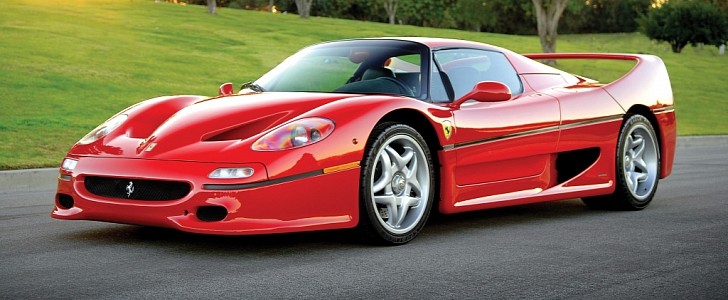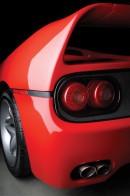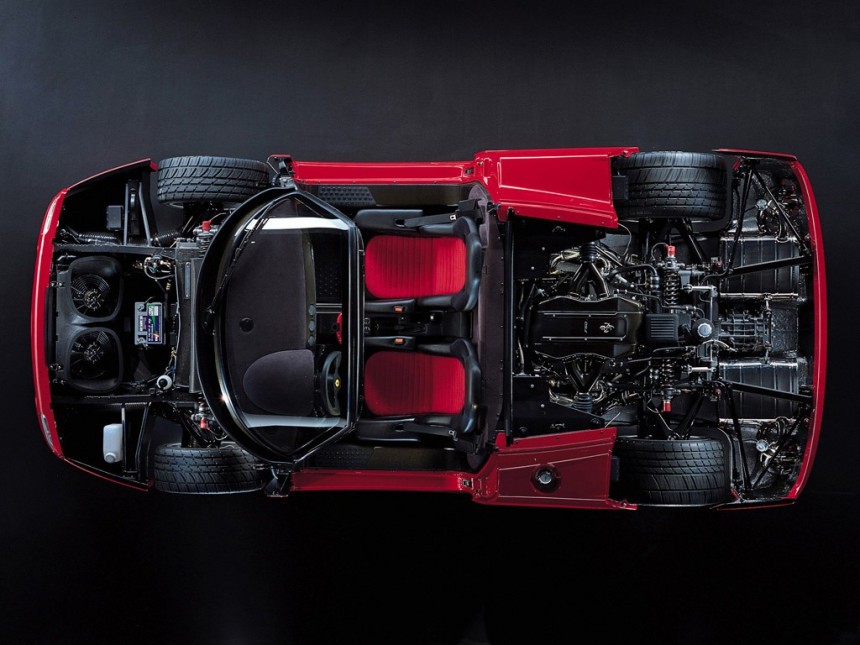Founded in 1929, the Scuderia Ferrari racing team was complemented by an auto-making division in 1947. To make a long story short, Enzo Ferrari knew that he couldn’t fund his motorsport ventures without selling automobiles to the public, both racing cars, and road-going models.
Although it has always lived in the shadow of the F40, the final road-legal Ferrari approved by Il Commendatore, the F50 is the closest Ferrari has ever come to a Formula 1 car for the road thanks to a 4.7-liter V12 engine derived from a 3.5-liter unit that helped Ferrari win races in the 1990 season.
641 is how the Prancing Horse of Maranello calls the iconic single-seater that achieved a grand total of six wins. Later known as the F1-90 because of the semi-automatic gearbox with seven forward ratios, the 641/F1-90 also happens to be the first-ever Formula 1 racecar with traction control.
Codenamed Tipo F130, the F50 is named this way to celebrate five decades of Maranello-made cars even though it was launched in 1995, two years before the anniversary. The reason the Maranello-based company hurried to market is rather simple: Ferrari simply wanted to ensure that U.S. examples could be delivered before the introduction of tighter emission regulations.
A free-breathing affair compared to a twin-turbo setup for the F40, the F50 features aluminum alloy for the five-valve-per-cylinder heads, titanium alloy for the connecting rods, and forged aluminum pistons from Mahle. The powerplant also employs forged steel for the crankshaft and camshafts, magnesium for the valve covers, oil pump housing, and water pump housing, as well as dry-sump lubrication as you’d expect of a supercar.
Inspired by the Mythos concept from 1989, the F50 is rocking Bosch Motronic 2.7 engine management, variable-length intake and exhaust manifolds, an 11.3:1 compression ratio, and a 65-degree angle between the cylinder banks, a 65-degree angle shared with the Dino V6 engine and Dino-based V12s that Ferrari used in grand tourers like the 456, 550, 575, and 612.
131 millimeters (5,15") longer in wheelbase than the F40, the celebratory model is equipped with a six-speed manual rather than Ferrari’s dreaded automated manual. The F1 electrohydraulic-operated transmission rolled out in 1997 in the F355, and cars fitted with this paddle-shift box are dubbed 355 F1.
In true Formula 1 fashion, the powerplant and transmission combine into a load-bearing structure to which Ferrari attached the rear suspension componentry. Speaking of which, the pushrod shocks are obviously inspired by the world of motorized sports. Controlled by an electronic brain, these Bilstein-supplied shocks are designed to adjust dampening according to both longitudinal and lateral acceleration, the steering angle, and speed.
Constructed from Cytec Aerospace Materials carbon fiber, the chassis of the F50 tips the scales at only 102 kilograms (224 pounds). In order to save weight, Ferrari didn’t even bother with power steering or anti-lock brakes.
Originally penned in Spider and Berlinetta flavors, the F50 was eventually adapted into a Targa configuration because it offered the best of both worlds. The body-colored hardtop is joined by a smaller canvas top because the hardtop is too large to be stowed anywhere in the car. As for the interior of the F50, “spartan” would be the best word to describe it despite the adjustable foot pedals, leather bucket seats, and Alcantara-wrapped dash.
Weighing in at 1,230 kilograms (2,712 pounds), this amazing machine was offered with exactly seven options: red or black for the seat centers and five paint finishes. In alphabetical order, these are Argento Nurburgring, Giallo Modena, Nero Daytona, Rosso Barchetta, and the popular Rosso Corsa.
From 1995 through 1997, the Prancing Horse produced a total of 349 examples of the breed. No fewer than 302 were finished in Rosso Corsa, whereas Argento Nurburgring and Nero Daytona tallied four units each.
Four seconds quicker than the F40 around the Fiorano test circuit, the F50 can hit 100 kilometers per hour (62 miles per hour) in 3.7 seconds, while top speed is rated at 325 kilometers per hour (202 miles per hour). Originally priced at $475,000 or $866,310 adjusted for inflation, the 512-horsepower F50 is a proper collector’s item. Based on recent auction results, a good one will set you back to anything between $3 million and $4 million.
641 is how the Prancing Horse of Maranello calls the iconic single-seater that achieved a grand total of six wins. Later known as the F1-90 because of the semi-automatic gearbox with seven forward ratios, the 641/F1-90 also happens to be the first-ever Formula 1 racecar with traction control.
Codenamed Tipo F130, the F50 is named this way to celebrate five decades of Maranello-made cars even though it was launched in 1995, two years before the anniversary. The reason the Maranello-based company hurried to market is rather simple: Ferrari simply wanted to ensure that U.S. examples could be delivered before the introduction of tighter emission regulations.
A free-breathing affair compared to a twin-turbo setup for the F40, the F50 features aluminum alloy for the five-valve-per-cylinder heads, titanium alloy for the connecting rods, and forged aluminum pistons from Mahle. The powerplant also employs forged steel for the crankshaft and camshafts, magnesium for the valve covers, oil pump housing, and water pump housing, as well as dry-sump lubrication as you’d expect of a supercar.
Inspired by the Mythos concept from 1989, the F50 is rocking Bosch Motronic 2.7 engine management, variable-length intake and exhaust manifolds, an 11.3:1 compression ratio, and a 65-degree angle between the cylinder banks, a 65-degree angle shared with the Dino V6 engine and Dino-based V12s that Ferrari used in grand tourers like the 456, 550, 575, and 612.
In true Formula 1 fashion, the powerplant and transmission combine into a load-bearing structure to which Ferrari attached the rear suspension componentry. Speaking of which, the pushrod shocks are obviously inspired by the world of motorized sports. Controlled by an electronic brain, these Bilstein-supplied shocks are designed to adjust dampening according to both longitudinal and lateral acceleration, the steering angle, and speed.
Constructed from Cytec Aerospace Materials carbon fiber, the chassis of the F50 tips the scales at only 102 kilograms (224 pounds). In order to save weight, Ferrari didn’t even bother with power steering or anti-lock brakes.
Originally penned in Spider and Berlinetta flavors, the F50 was eventually adapted into a Targa configuration because it offered the best of both worlds. The body-colored hardtop is joined by a smaller canvas top because the hardtop is too large to be stowed anywhere in the car. As for the interior of the F50, “spartan” would be the best word to describe it despite the adjustable foot pedals, leather bucket seats, and Alcantara-wrapped dash.
Weighing in at 1,230 kilograms (2,712 pounds), this amazing machine was offered with exactly seven options: red or black for the seat centers and five paint finishes. In alphabetical order, these are Argento Nurburgring, Giallo Modena, Nero Daytona, Rosso Barchetta, and the popular Rosso Corsa.
From 1995 through 1997, the Prancing Horse produced a total of 349 examples of the breed. No fewer than 302 were finished in Rosso Corsa, whereas Argento Nurburgring and Nero Daytona tallied four units each.
Four seconds quicker than the F40 around the Fiorano test circuit, the F50 can hit 100 kilometers per hour (62 miles per hour) in 3.7 seconds, while top speed is rated at 325 kilometers per hour (202 miles per hour). Originally priced at $475,000 or $866,310 adjusted for inflation, the 512-horsepower F50 is a proper collector’s item. Based on recent auction results, a good one will set you back to anything between $3 million and $4 million.



























